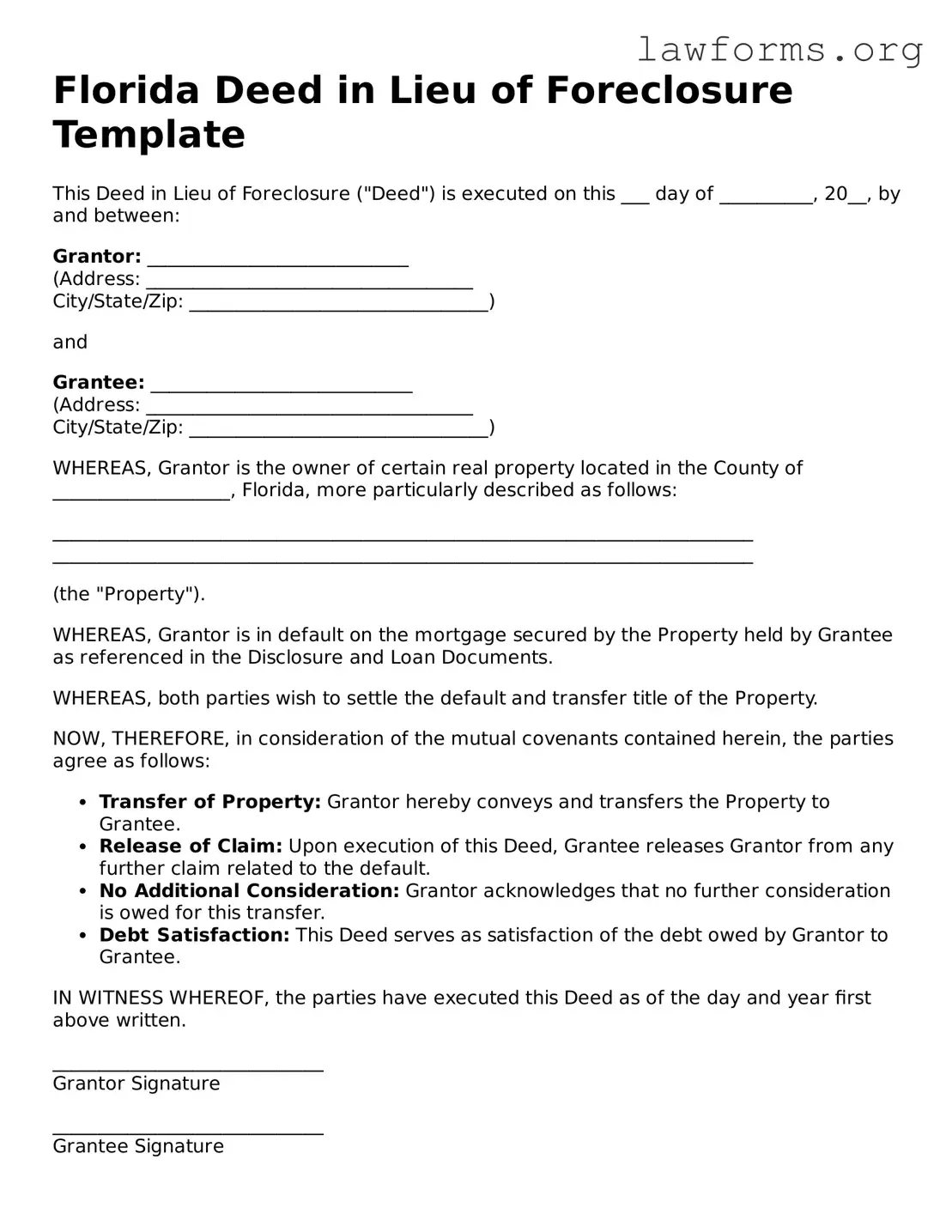Florida Deed in Lieu of Foreclosure Template
This Deed in Lieu of Foreclosure ("Deed") is executed on this ___ day of __________, 20__, by and between:
Grantor: ____________________________
(Address: ___________________________________
City/State/Zip: ________________________________)
and
Grantee: ____________________________
(Address: ___________________________________
City/State/Zip: ________________________________)
WHEREAS, Grantor is the owner of certain real property located in the County of ___________________, Florida, more particularly described as follows:
___________________________________________________________________________
___________________________________________________________________________
(the "Property").
WHEREAS, Grantor is in default on the mortgage secured by the Property held by Grantee as referenced in the Disclosure and Loan Documents.
WHEREAS, both parties wish to settle the default and transfer title of the Property.
NOW, THEREFORE, in consideration of the mutual covenants contained herein, the parties agree as follows:
- Transfer of Property: Grantor hereby conveys and transfers the Property to Grantee.
- Release of Claim: Upon execution of this Deed, Grantee releases Grantor from any further claim related to the default.
- No Additional Consideration: Grantor acknowledges that no further consideration is owed for this transfer.
- Debt Satisfaction: This Deed serves as satisfaction of the debt owed by Grantor to Grantee.
IN WITNESS WHEREOF, the parties have executed this Deed as of the day and year first above written.
_____________________________
Grantor Signature
_____________________________
Grantee Signature
WITNESSES:
_____________________________
Witness Signature
_____________________________
Witness Signature
STATE OF FLORIDA
COUNTY OF ___________________
Before me, a Notary Public, personally appeared ____________________, who is known to me or has produced _____________________ as identification and who acknowledged that he/she executed the foregoing Deed in Lieu of Foreclosure for the purposes therein contained.
Witness my hand and official seal this ___ day of __________, 20__.
_____________________________
Notary Public Name
My Commission Expires: ____________
